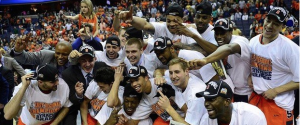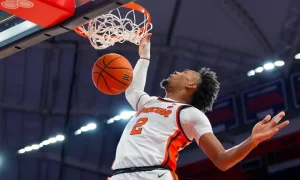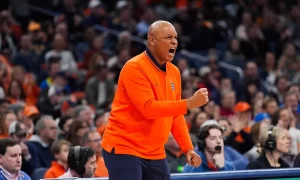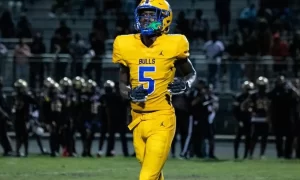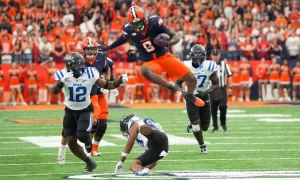Follow The Fizz on Twitter for the latest SU basketball news
It’s hard to imagine what the campus of Syracuse University would be like had the men’s basketball team reached the Final Four again.  It’s no surprise that the recently eliminated team of 2014 is much, much different than the momentum riding team from 2013, but are they statistically similar?
In 2012-2013 the Orange finished fifth in the Big East and came in second in the championship.  The team was led by junior forward CJ Fair, who averaged 14.5 points per game, and sophomore point guard Michael Carter-Williams, who averaged 7.3 assists per game.  The team defied odds and marched to the Final Four, knocking off Montana, Cal, Indiana, and Marquette in the process.
This year’s team was led by Fair, who returned and scored 16.5 points per game. Freshman Tyler Ennis averaged 5.5 assists per game and helped lead the Orange to an historic 25-0 start.  However, the Orange was ousted in its second game of the tournament.  Players and fans thought this year’s team was special. So did it have a winning formula like last season’s team did?
The first difference between the two teams is the style of Fair’s game.  In 2013, Fair was a knockdown midrange shooter who did not need to create his own shot and facilitate the offense.  In 2014, however, Fair turned the ball over often (2.5 times per game) and shot only 43 percent from the field, compared to 47 percent from last year.
Carter-Williams was another big difference-maker.  Not only was his offense more dependable, but he also had a knack for getting to the rim and the foul line.  His defense was also something that was sorely missed.  Carter-Williams averaged 2.7 steals per game with his unusually large size for a point guard.  Ennis, on the other hand, averaged only 2.1 steals per game.
Another difference between the teams was the presence of a clutch three-point shooter.  James Southerland averaged 2.5 three-pointers per game while scoring an average of 13.3.  Southerland’s equivalent this season was Trevor Cooney, who only averaged 11.1 points per game in conference play, where his abilities seemed to drop dramatically.  Southerland’s trademark high release helped his cause, as well as his uncanny size for an outside shooter.  Cooney’s undersized frame and inability to set his feet cost the team a lot of scoring.
The biggest difference between the two teams was the overall lack of senior leadership.  Last season’s squad had seniors Brandon Triche, Southerland, and an unusually mature Carter-Williams to lean on.  This season’s team, however, had to depend on Ennis, a freshman, to play nearly 36 minutes per game.  The only other seniors with significant playing time on the team were Fair and Baye Moussa Keita.  Keita often hurt the Orange more than he helped them when he was on the floor.
The team statistics, however, are incredibly similar: 70.8 points per game vs. 68.2 points per game and 58.6 points allowed per game vs. 59.2 points allowed per game.
So what was the difference?  It has to do with the Orange’s declining play and shooting over the stretch.  The Orange shot extremely well down the stretch backed by Southerland two seasons ago.  Syracuse had nobody to turn to this season when Fair’s shooting declined, and that ultimately spelled their doom.
The Orange certainly had the pieces to make another Final Four run, but ultimately, their team just didn’t stack up to last year’s.
Posted by: Jason Weingold


